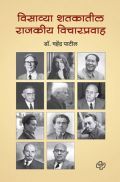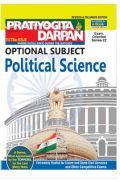PART-I: INTRODUCTION
• The Dawn of a New Era
• Basic Principles
• Historical Background
PART-II: PREAMBLE, TERRITORY AND CITIZENSHIP
• The Preamble
• The Union and its Territory
• Citizenship
PART-III: FUNDAMENTAL RIGHTS AND THE DIRECTIVE PRINCIPLES
• Fundamental Rights: General Nature
• Right to Equality (Articles 14,15,16,17 and 18)
• The Right to Freedom (Article 19)
• The Right Against Exploitation (Articles 23 and 24)
• The Right to Freedom of Religion (Articles 25 to 28)
• Cultural and Educational Rights (Articles 29 and 30)
• The Right to Property (Articles 31, 31-A, 31-B, 31-C and 31-D)
• The Right to Constitutional Remedies (Articles 32 and 32-A)
• An Assessment
• The Directive Principles
• Fundamental Duties
PART-IV: THE MACHINERY OF THE UNION GOVERNMENT
• The Union Executive • The Council of Ministers and the Prime Minister
• The Vice-President and the Attorney-General
• The Union Legislature — The Parliament of India
• Legislative Procedure
• Privileges and Committees
• The Union Judiciary — The Supreme Court
PART-V: GOVERNMENT MACHINERY IN THE STATES
• The State Executive: The Governor
• The Governor and the Council of Ministers
• The State Legislature
• Judiciary in the States
• Union Territories
PART-VI: THE FEDERAL SYSTEM
• The Scheme of Division of Powers
• Administrative Relations between the Union and the States
• Financial Relations
• Inter-State Trade and Commerce
• Emergency Provisions
• The Zonal Councils
PART-VII: MISCELLANEOUS PROVISIONS
• The Comptroller and Auditor-General of India
• Public Services
• The Public Service Commissions
• Administrative Tribunals
• Official Language
• Elections
• Special Provisions Relating to Certain Classes
• Amendment of the Constitution
• Constitutional Review
• Concluding Observations


















